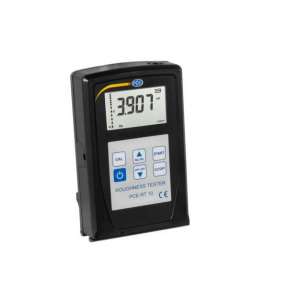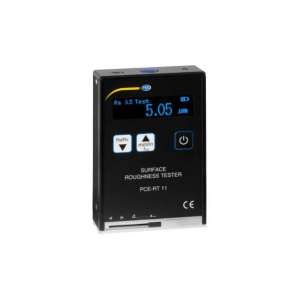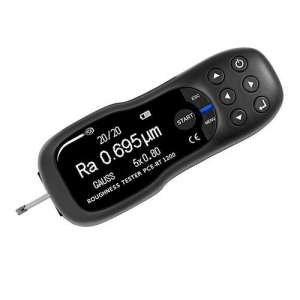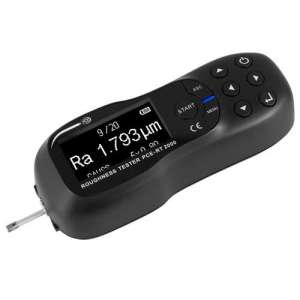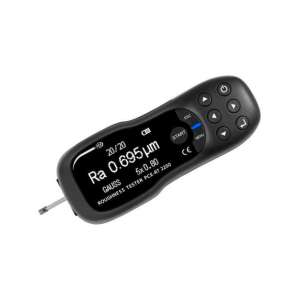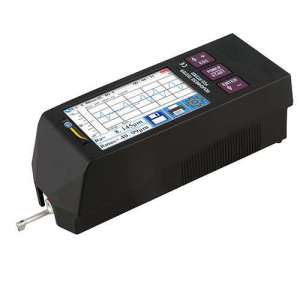Rugometers
A roughness meter is an instrument that is responsible for assigning a quantifiable value to the level of roughness of a surface or a perforation. In the field of physics, "roughness" is understood as imperfections, irregularities, unevenness or inequalities that for some reason have been forming on these surfaces.
This is a portable and high-tech equipment, usually not many people are aware of it, however, it is very useful when contributing in the field of research and especially for industrial processes. It is for this reason that it is crucial to consider it as a measuring instrument and thus apply it in the best way in those situations that merit it, for example, it is very beneficial when exploring the quality of mechanical parts.
No matter how polished and smooth some surfaces may look, they all possess roughness to some degree, whether greater or lesser. In general, you will try to measure the microgeometry of these surfaces, which is nothing more than the small parts of it.
Characteristics
The roughness meter has a series of exceptional qualities that allow it to be a very required measuring instrument in many areas, it is for this reason that it is important to know each of these aspects that make your measurements always accurate and precise. The main features of this instrument will be described below:
This instrument has a great precision when it comes to making calculations on the roughness found on the surfaces, this is thanks to the sensor that is integrated into it.
One of the qualities that separate it from other measuring instruments is that it is usually accompanied by other elements that help in the work, such as: a briefcase, a calibrator and a protector.
The roughness meter is governed by DIN standards, they are responsible for regulating and dictating all the fundamental aspects of roughness.
This instrument does not merit that it be forced against the surface of the piece to be studied, since the sensors that are in it are very sensitive and are easily damaged, only the head must be slightly approached to be able to do the analysis.
Its versatility allows the data obtained about the imperfections of the studied surface to be transferred to a computer, if a more detailed study of the information collected is required.
The instrument consists of the following parts or elements: Head, transducer, mechanical and electrical filter, screen, drag box, calculator, recorder, battery, among others. About them we will be knowing later, in the section on their operation.
The roughness meter is very complete to carry out the studies of metal parts, despite having such a complex design, it is actually very easy to handle due to the sensors that are integrated and the internal calculators that are responsible for performing much of the work.
What is it for?
As explained above, this instrument is used to measure the degree of roughness of a certain surface. This measurement has great precision, accuracy and reliability, this is because it is done with speed once this device comes into contact with the surface in question.
In other words, it is appropriate to make the generalization that this device measures microgeometry, which means that it explores in depth the unevenness, imperfections or undulations that are on the surface of mechanical parts, artifacts, among others, once their manufacture is completed.
In this way, it contributes to the verification of the quality of all the manufactured artifacts with respect to the imperfections of its surface to guarantee that the material with which the product is made does not have some type of error by which its durability is affected.
Importance
As explained above, this instrument is very important in the field of industry, since all products designed and manufactured must go through a quality control where it is ensured that it does not present any type of failure and that the material with which it was made is sufficiently resistant.
Being able to guarantee that the product to be sold is of the best quality, is what means that it will keep a company afloat, so that, if this instrument manages to detect imperfections, unevenness or even wear, it is time to correct and thus continue to provide a better quality to the public to which the product is directed.
In the same way, it should be noted that the invention of this instrument has been a great step for the field of metrology, since its traceability is of great importance when it comes to understanding the magnitudes, in order to ensure the normalization of these.
Although this instrument was developed recently, roughness is a science that has been studied within the product processing industry for a long time, therefore, it seems logical to think that they required a device that contributed in a good way in the verification of their production elements.
The most important thing attributed to the use of this instrument is precisely to guarantee the population that the products that have been made in the industries enjoy perfect resistance, since they have gone through an arduous process to check their quality, whether mechanical parts, screws, among other elements of common use, employees in order to meet the most basic needs.
Rugosímetro PCE-RT 10

Product Data Sheet:
Price:
€1,592.24 (inc. VAT)Rugosímetro PCE-RT 11

Product Data Sheet:
Price:
€1,679.36 (inc. VAT)Rugosímetro PCE-RT 1200

Product Data Sheet:
Price:
€1,848.76 (inc. VAT)Rugosímetro PCE-RT 2000

Product Data Sheet:
Price:
€2,317.03 (inc. VAT)Rugosímetro PCE-RT 2200

Product Data Sheet:
Price:
€2,619.53 (inc. VAT)Rugosímetro PCE-RT 2300

Product Data Sheet:
Price:
€2,814.34 (inc. VAT)
